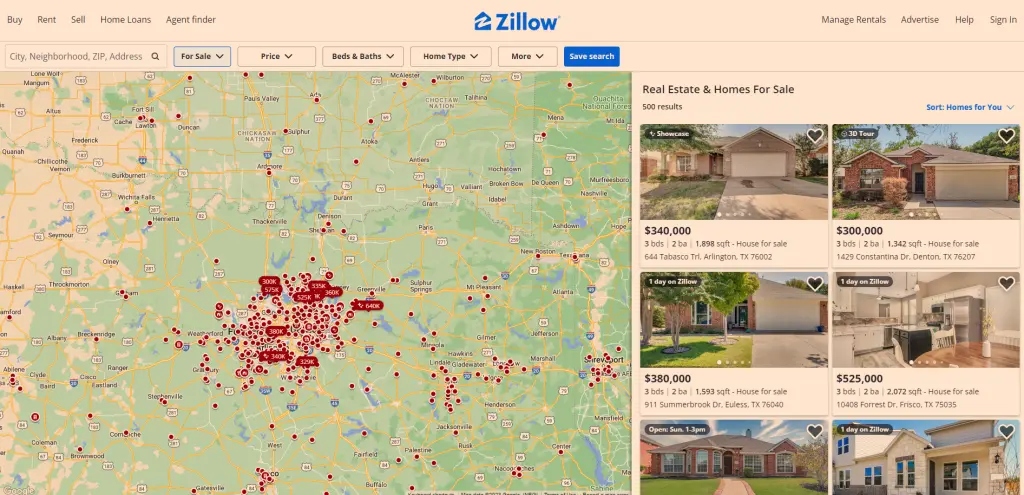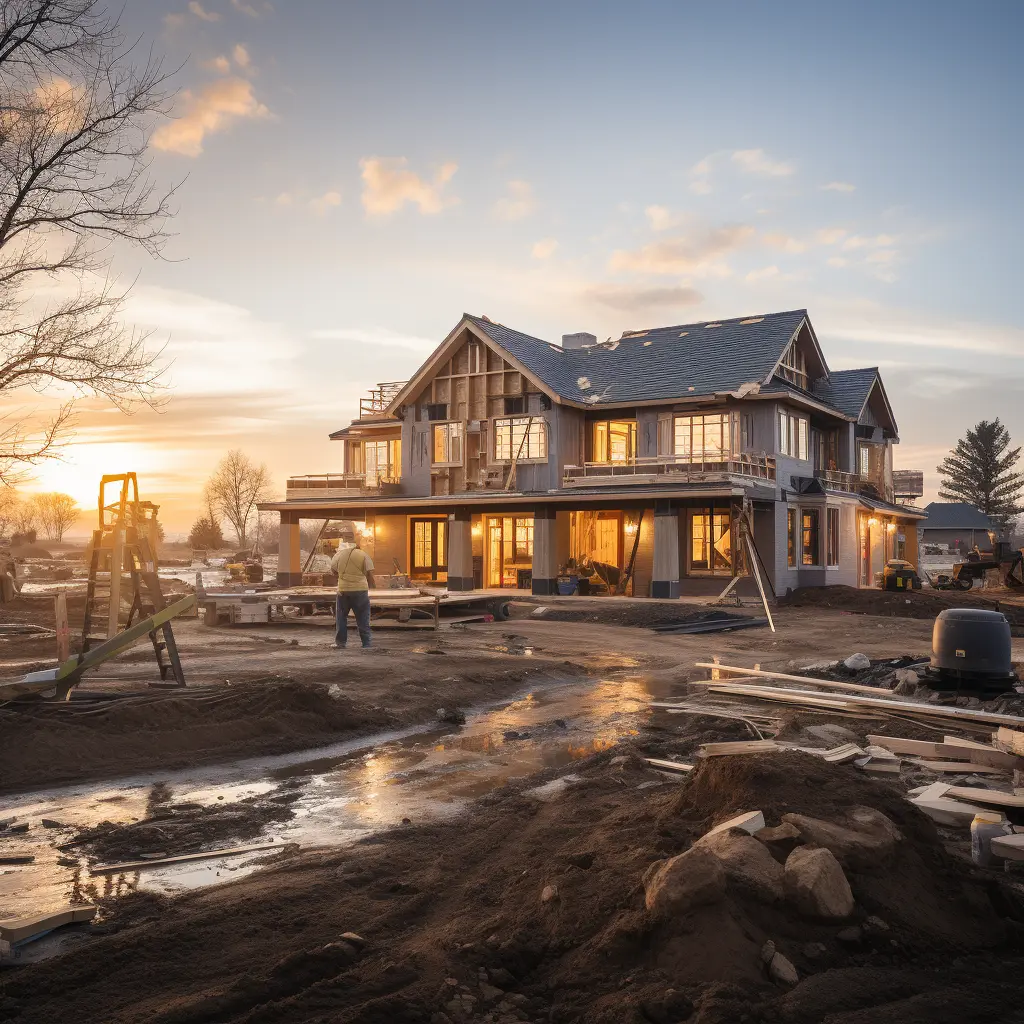Introduction: The Quest to Discover Your Home’s Origins
Imagine, for a moment, that every brick and beam in your home has a story to tell. For real estate investors, understanding the origin of a property is not just about curiosity; it’s about diving deep into the annals of a home’s history to unveil its true value. Who built your home? Why was it built in a certain way? Let’s embark on this exciting journey together!
Why Knowing Your Home’s Builder Matters
The bricks and mortar of a house are just the surface. Knowing who built your home offers:
- Historical Significance: Uncovering any significant past events or famous inhabitants.
- Quality Insights: A recognized builder may indicate superior workmanship and durability.
- Investment Value: Homes with a notable background can often fetch a premium in the market.
It’s like buying a piece of art. Knowing the artist can make all the difference in how you appreciate and value the artwork.
The Intersection of History and Investment
For aspiring real estate investors, there’s a sweet spot where historical knowledge meets savvy investment. Homes with a story can be a unique selling point, especially in markets teeming with generic constructions.
But it’s not just about sales. Imagine entertaining guests and regaling them with tales of your home’s past, or feeling a deeper connection with your property, knowing the hands that laid its foundation.
In essence, this journey isn’t just about bricks or beams; it’s about stories, value, and connections.

Starting Point: Public Records
Embarking on the journey to discover the history of your home, the first stop often begins with public records. These official documents can be a treasure trove of information, revealing not just the builder’s name but also past ownership, significant renovations, and more.
The Role of the County Assessor’s Office
The County Assessor’s Office is akin to the historical heartbeat of any property. Here’s why it’s indispensable:
- Ownership Trails: Trace back to previous owners, which can provide hints about the builder.
- Building Specifications: Get details about the property’s size, structural design, and materials used. This can offer clues about the era it was built and the builder’s identity.
- Valuation History: Discover the home’s historical valuation, which might highlight periods of significant renovations or changes.
Visiting the office in person often yields better results, as not all data might be digitized. Plus, the staff can be a valuable resource, guiding you to pertinent records or offering additional insights.
Navigating Online Property Databases
In our digital age, several online platforms provide a wealth of property data at your fingertips. Sites like Zillow, Realtor.com, and local property database websites can be goldmines:
- Photos and Listings: Historical listings might contain photos or descriptions which hint at the builder or architectural style.
- User Discussions: Some platforms have user forums where residents discuss property history, renovations, and more.
- Comparative Analysis: By comparing properties of the same era in the vicinity, you can often identify common builders or architectural trends of the time.
Remember to exercise caution and cross-reference. While these databases are invaluable, there’s a mix of user-generated and official content. Always validate critical details with official sources.

Diving Deeper: Historical Archives
While public records offer a foundational understanding, diving into historical archives unveils the richer tapestry of your home’s past. Think of this step as moving from a general history textbook to a specialist tome that delves into intricate details.
The Goldmine of Local Libraries
Often overlooked, local libraries are a veritable treasure chest of historical information. Here’s how they can be instrumental:
- Old Newspapers: Archived newspapers can contain property listings, announcements about new housing developments, or even feature articles on prominent local builders of the time.
- Historical Maps: These can give insights into how a neighborhood evolved, helping identify older structures and potentially their builders.
- City Directories: Predating phone books, these directories list residents, their occupations, and addresses, potentially linking builders to specific properties.
A pro tip? Befriend the librarians. Their knowledge about available resources can be a huge time-saver and lead you to unexpected findings.

Benefits of Historical Societies and Preservation Groups
Historical societies and preservation groups are the guardians of a community’s history. Their involvement can be the key to unlocking secrets your property hides:
- Detailed Records: Many societies maintain records of historical properties, including builder details, especially for homes that have architectural or historical significance.
- Expert Guidance: Members of these groups are often history enthusiasts or experts who can guide your search or provide additional context.
- Events and Workshops: Participate in their events. Talks, walks, or workshops can be avenues to gather information or network with others who have undertaken similar quests.
Engaging with these groups not only aids your immediate search but also deepens your connection with the community, understanding its past, its evolution, and its heritage.
The Magic of Networking
As the adage goes, “It’s not just what you know, but who you know.” When it comes to uncovering the mysteries of a home’s origin, the human connection can often reveal stories and insights that no document can. Networking taps into collective memory, shared experiences, and anecdotal treasures.
Engaging Neighbors and Local Community
Who better to ask about a home’s history than those who’ve lived around it for years, or even decades? Here’s how neighbors and the local community can be an unparalleled resource:
- Anecdotal Stories: Older neighbors might recall past residents, events, or even the original builders and their tales.
- Shared Histories: Homes built around the same time might share builders. A neighbor’s known history could be a clue to yours.
- Old Photos or Documents: It’s not uncommon for residents to have photos from community events or even old property documents that can hint at a home’s past.
Start with a casual chat, perhaps during a community gathering or a neighborhood walk. You’d be surprised at the rich tapestry of stories waiting to be shared.
Reaching Out to Real Estate Professionals
Real estate professionals, with their fingers on the pulse of the property market, can offer a wealth of information:
- Previous Listings: Agents might have access to older listings, which can include details about a property’s history or builder.
- Builder Ties: In many communities, real estate professionals maintain relationships with local builders. They might be able to directly point you to the builder of your home or a similar one.
- Networking Events: Attending open houses or real estate events can also be an opportunity to meet and gather information from professionals who’ve been in the business for years.
Always come prepared with specific questions and any relevant details about your property. The more precise you are, the more actionable insights you can gather.

Modern Tools and Technology
In the digital era, our quest to trace a home’s roots has become significantly easier. From a plethora of real estate platforms to buzzing social media communities, the information highway is rich, expansive, and often just a click away.
Real Estate Platforms and Builder Directories
The online world boasts a variety of platforms tailored to real estate aficionados. Here’s how they can aid your search:
- Comprehensive Listings: Sites like Redfin, Trulia, and Realtor.com provide extensive property details, including historical data where available.
- Builder Directories: Some platforms specialize in listing builders, past and present. By searching with your home’s specifics, you might just find a match.
- Interactive Features: Modern real estate platforms often have tools like virtual tours or interactive floor plans, offering more clues about a home’s origin.
While these tools provide immense convenience, always approach with a discerning eye. It’s advisable to cross-reference findings for accuracy.
Utilizing Social Media Groups and Forums
The power of community comes alive on social media. From niche groups to expansive forums, here’s how the digital collective can be harnessed:
- Local History Groups: Platforms like Facebook often host local history or community groups where members share stories, photos, and memories. Your home might just be part of someone’s cherished memory!
- Real Estate Forums: Websites like BiggerPockets host active forums where professionals and enthusiasts discuss properties, builders, and more.
- Archival Shares: Social media platforms, especially visual ones like Instagram, see users sharing old photos or historical tidbits. Such shares, tagged appropriately, can offer unexpected leads.
When engaging online, always respect privacy norms and be genuine in your outreach. The online community is vast, but word travels fast. A genuine query will always receive warmer responses than a perceived invasion of privacy.
Reading the Clues: Architectural and Design Telltales
Every home tells a story, not just through its documented history, but also through its bricks, beams, and design intricacies. By understanding the language of architecture and design, one can piece together a narrative that points to the home’s origins.
Identifying Era-specific Architectural Features
Just as fashion trends change through the decades, so do architectural styles. Homes often mirror the popular design movements of their time. Here’s how to decode them:
- Victorian Homes: Think turrets, intricate woodwork, and expansive porches. If your home exudes ornate detailing, it might belong to the Victorian era.
- Mid-century Modern: Clean lines, open floor plans, and large windows are telltale signs of homes built in the mid-20th century.
- Colonial Revival: Symmetry is key here. Brick facades, gable roofs, and evenly spaced windows point towards the Colonial influence.
By identifying such distinct features, you can pinpoint the architectural movement your home aligns with, further narrowing down the potential builders who specialized in that style.
Decoding Material Choices and Workmanship
The choice of materials and the workmanship can offer invaluable insights into the home’s era and its builder. Let’s explore:
- Historic Masonry: The type of bricks, the style of masonry, and the mortar used can indicate specific time periods and local builder techniques.
- Woodwork Details: From the type of wood used to the intricacy of carvings, woodwork can offer clues about a home’s age and its craftsman.
- Flooring Choices: Parquet patterns, terrazzo designs, or even the type of nails used in wooden floors can hint at specific decades and prevalent building practices of the time.
When examining these details, consider consulting a restoration expert or an architect. Their trained eyes can often catch subtleties that might elude the layperson.
Common Challenges and How to Overcome Them
Discovering the builder of your home can sometimes feel like assembling a jigsaw puzzle with a few missing pieces. Challenges are a part of the quest, but with the right approach, even the toughest of obstacles can be surmounted.
Dealing with Incomplete or Lost Records
It’s not uncommon to encounter gaps in documentation. Fires, mishandling, or mere passage of time can lead to lost or incomplete records. Here’s how you can navigate this:
- Secondary Sources: If primary records are missing, look for secondary sources like newspaper articles, community newsletters, or oral histories that might mention the property.
- Neighboring Properties: Homes built around the same time or in the same neighborhood might share documentation or records. Explore local archives or approach neighbors for potential leads.
- Property Surveys: While not direct evidence of a builder, surveys can offer details about the property’s history, previous owners, or architectural changes, providing new avenues to explore.
Remember, even if the direct trail goes cold, alternative paths often emerge for the diligent seeker.
Unraveling Mystery Builders or Architectural Modifications
Sometimes, homes come with layers of mystery: unknown builders or unexplained architectural modifications. Here’s how to decode them:
- Local Expertise: Engage with local historians, architects, or even long-time contractors. Their familiarity with local building trends might shed light on mystery builders.
- Blueprints and Permits: Check city or county records for old blueprints or building permits. These can offer insights into modifications and potentially the hands behind them.
- Community Discussions: Engage in local community forums or social media groups. Someone’s anecdote or memory might just be the missing piece to your puzzle.
Unraveling mysteries requires patience and an open mind. The journey might be long, but the stories discovered along the way make it a rewarding experience.
Conclusion: Piecing Together Your Home’s Story
Every brick, every beam, and every window of a home holds whispers of its past. While the journey to trace a home’s origins might seem daunting, the rewards are profoundly enriching. You’re not just discovering a name or a date; you’re unearthing stories, lives, and legacies.
Appreciating the Value of Your Home Beyond its Price Tag
Real estate often boils down to numbers: square footage, market value, appreciation rates. But there’s an intangible value to understanding your home’s story. It offers:
- Connection: To the past, to the community, and to the very foundation you stand upon.
- Pride: In preserving history, honoring craftsmanship, and being a steward of stories.
- Legacy: By knowing the past, you become a part of the home’s continuum, leaving your mark for future generations.
A home is more than just walls and a roof; it’s a tapestry of human endeavor and dreams.
Empowering Your Real Estate Investment with Knowledge
For real estate investors, understanding a property’s history isn’t just about nostalgia. It’s a powerful tool:
- Market Edge: Homes with a documented history, especially those with notable builders or architectural significance, often command higher prices.
- Authentic Restorations: Knowing the original design or materials allows for more authentic restorations, adding to the property’s value.
- Engaging Narratives: A compelling backstory can be a unique selling proposition, captivating potential buyers or renters.
Knowledge truly is power, both in preserving history and in ensuring a wise and fruitful investment.







